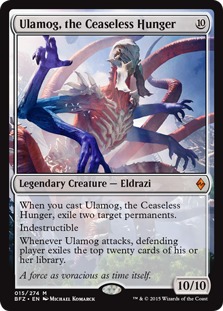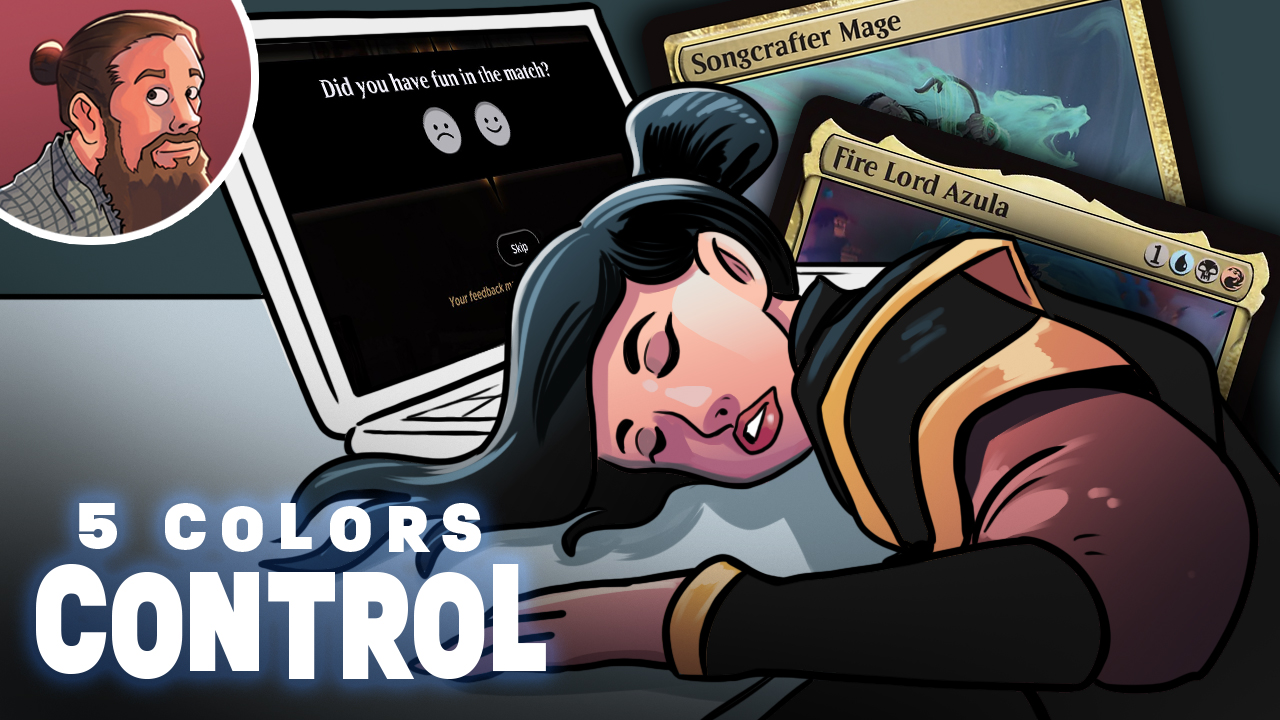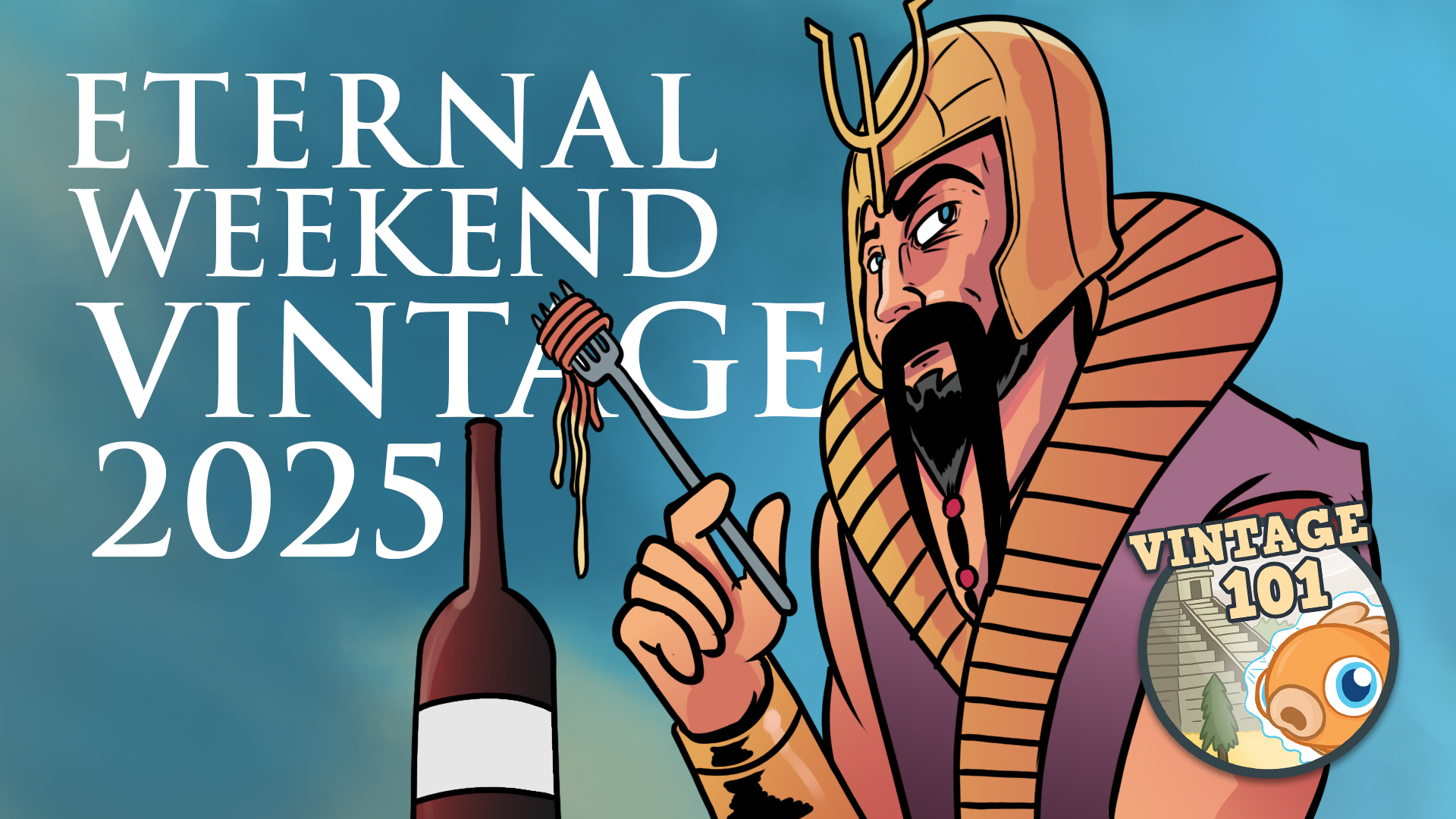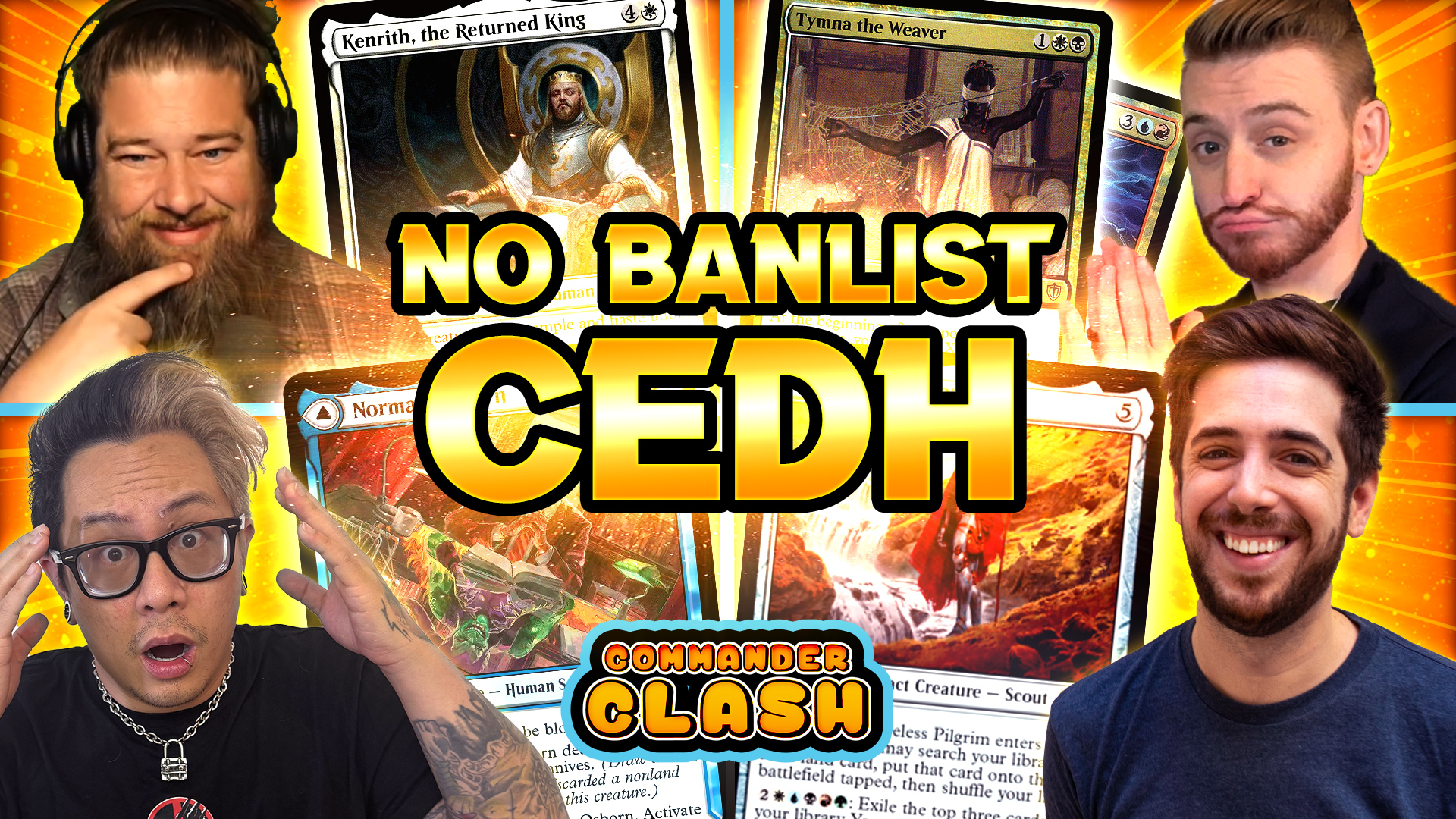Budget Magic: $96 (51 tix) Standard Ulamog Exile
I can haz lands? 16 lands in play, no biggie.
Olá Budget Magic lovers, it's that time again. This week we finally get to explore Battle for Zendikar Standard, and first up is Ulamog Exile, a deck designed to combat what looks to be a very expensive Standard format. When I first looked over the Battle for Zendikar spoiler, I was generally disappointed in the Eldrazi. Ingest seemed like a throw away mechanic for constructed, and since most of the Eldrazi Processors need cards in exile to be effective, I didn't think much of them either. Thankfully, I realized there is more than one way to skin a cat, and our first Battle for Zendikar deck depends heavily on exiling and Eldrazi Processors. Plus it gives us an excuse to cast Ulamog, the Ceaseless Hunger, which has to be one of the sweetest things to do in Standard. We'll break down the deck in a minute, but first let's get to the videos. Oh, a quick reminder — if you enjoy the Budget Magic series and the other video content here on MTGGoldfish, make sure to subscribe to the MTGGoldfish Youtube Channel to keep up on all the latest and greatest.
Ulamog Exile Intro
Ulamog Exile vs Landfall
Ulamog Exile vs Esper Dragons
Ulamog Exile vs Abzan Warriors
Ulamog Exile vs RB Dragons

Note: You can go ultra-budget by switching out Ulamog, the Ceaseless Hunger for Desolation Twin, bringing the deck price down to $50 or 30 tix.
This one's pretty simple. Our goal is to exile everything our opponents play, which in turn fuels our Eldrazi Processors, which eventually gives us enough mana to play Ulamog, the Ceaseless Hunger and finish off the game. However, there is a lot of interesting synergy in the deck. It's much further from a brute force "kill it all" control deck than looks on paper. The easiest way to think of this deck is in three pieces: the exile, the processors, and the finisher.
The Exile

Silkwrap is integral to the deck. It gives us a turn two play versus aggro where being able to remove a Monastery Swiftspear or Snapping Gnarlid is often the difference between winning and losing. It allows for insane starts where we Silkwrap our opponent’s first play and then Wasteland Strangler the exiled card on turn three to deal with our opponent’s second play. Often times this is good game against an aggro deck.
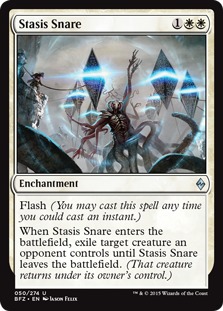
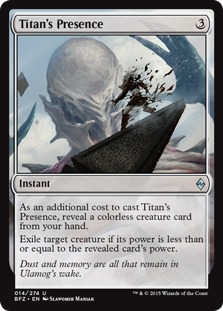
While it might not look like it on first glance, Stasis Snare and Titan's Presence are very close to the same card in our deck. Both exile a creature at instant speed for only three-mana. It is the instant speed aspect of these cards that make them so powerful. During our match against Esper Dragons, we were able to repeatedly (and permanently) deal with Dragonlord Ojutai during our opponent's attack phase due to our deck being saturated with these efficient, instant speed answers.

While Utter End can take down a creature in a pinch, its main purpose is getting rid of pesky planeswalkers. With the amount of exile in the deck and Read the Bones to keep things running smoothly, we can often trade one-for-one with our opponent's creatures until we cast an Ulamog, the Ceaseless Hunger to take over the game. However, a well-timed Ugin, the Spirit Dragon or flipped Jace, Vryn's Prodigy can run away with the game unchecked, so we are best served saving Utter End for planeswalkers unless we really, really have to kill a creature. Exiling a Dragonlord that would give our opponent an immediate, insurmountable advantage comes to mind. We have so many creature removal spells in the deck we don't want to waste our precious few Utter Ends on things a Silklash or Stasis Snare can take care of just as easily.

Yes, I realize it's six mana, but Grip of Desolation is a really powerful effect in a world of five-color decks, many of which skimp on colored sources. It's another unconditional, instant speed way to remove a Dragonlord or Siege Rhino, and it can randomly color screw an opponent, preventing them from casing Bring to Light for full value or another copy of Siege Rhino. It also provides fringe synergy with Oblivion Sower by adding another land to our opponent's exile zone.
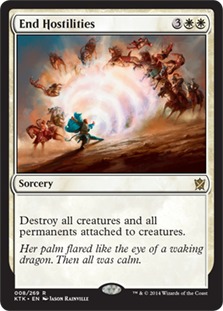
To be fair, End Hostilities doesn't exile anything, but it is an important hedge against go-wide aggro strategies. While we usually don't have a problem trading one-for-one with Zurgo Bellstriker, once a card like Hordeling Outburst hits the table we really need a way to sweep multiple creatures at once. Trying to clean up three Goblin tokens with Silklash is not only inefficient, it’s somewhat embarrassing. End Hostilities also gives us an out to Silumgar, Drifting Death, one of the more annoying creatures for our deck to deal with.
The Processors
The Eldrazi Processors were the reason I started building this deck in the first place. Many of them are extremely powerful, assuming you can always turn on their "put x cards from exile into the graveyard" ability. The big revelation (which is probably obvious in hindsight, but I hadn't thought about it) was that Processors work with Banishing Light effects, which creates a nice double-synergy. The biggest problem with cards like Stasis Snare and Silkwrap is that if an opponent deals with them, they get their creature back. Exiling things like Siege Rhino was always a risk. However, once we use a Processor to put the card exiled by Stasis Snare into the graveyard, this downside is eliminated.

Wasteland Strangler is very matchup dependent. Against an aggro deck, it's likely the most powerful card in our entire 75 since it's almost always a Flametongue Kavu two-for-one. Against five-color and midrange decks, it's passable since it kills Jace, Vryn's Prodigy or Nissa, Vastwood Seer. On the other hand, it's pretty bad against a dedicated control deck, so we generally board it out against UW Control or Esper Dragons. I started with four in the deck, but after running into Esper Dragons and Five-Color Control multiple times, I trimmed it down to three to hedge against its worsts matchups. If the metagame from this past weekend’s SCG Open (featuring exclusively GW Megamorph and Jeskai in the Top Eight) becomes the norm moving forward, I would go back to four copies of Wasteland Strangler.
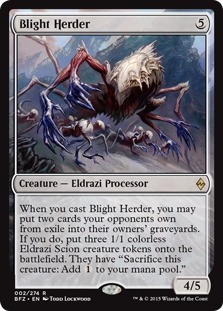
Blight Herder is quite the card. It comes down with Siege Rhino stats off the bat and getting three additional bodies means you end up with seven power and eight toughness for the low cost of five-mana — a great deal. Like Wasteland Strangler, Blight Herder is another way to get creatures out from under our Silkwraps and Stasis Snares, ensuring we don't get blown out by a Dromoka's Command. Plus, the three Eldrazi Scion tokens provide a path to cast Ulamog, the Ceaseless Hunger on turn seven.
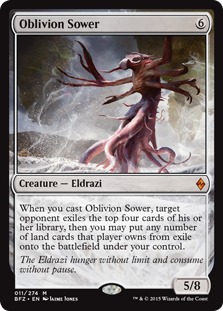
Another path to a quick Ulamog, the Ceaseless Hunger is Oblivion Sower. Oblivion Sower has been even better than expected. Its body is solid, blocking anything for only six mana. The amount of value it generates with its ability to steal opponent's lands from exile is sometimes staggering. It's not uncommon for our deck to end up with 15 or even 20 lands on the battlefield thanks to the six-drop. Since it triggers when cast, we don't even care that much if it gets countered; it still works us towards Ulamog, the Ceaseless Hunger.
The Finisher
One thing I learned while making these videos is that Ulamog, the Ceaseless Hunger is far less indestructible than he might appear. Abzan Charm, Foul-Tongue Invocation, and Utter End all provide clean answers to the Eldrazi titan. The good news is even when he dies, Ulamog, the Ceaseless Hunger provides some value exiling two of anything and fueling future Processors. If he doesn't immediately die, it usually only takes two attacks to finish the game, even through chump blockers.
The downside is we are extremely dependent on Ulamog, the Ceaseless Hunger to win the game and Infinite Obliteration has been on the upswing in sideboards. During our match against Esper Dragons, I felt heavily favored — until all of our Ulamog, the Ceaseless Hungers ended up in the exile zone. While I'm not 100 percent sure what the solution is (Ugin, the Spirit Dragon perhaps?), it seems risky to depend solely on one card to win the game. We might need to diversify our finishers to have continued success with the deck.
On a side note, if you want to go ultra budget, feel free to substitute Ulamog, the Ceaseless Hunger with alternate Eldrazi finishers. Desolation Twin or Void Winnower are fine substitutes that can drastically reduce the price of the deck.
Thoughts
- The deck felt solid, even though we sometimes ended up losing long, draw-out battles because our opponent outdrew us. Here we have to potential solutions: First, we could play more threats like Ugin, the Spirit Dragon, the fourth Ulamog, the Ceaseless Hunger, or something else I'm not considering. Second, we can splash a third color, potentially blue for some card draw in Dig Through Time. Unfortunately, either of these options would make the deck less budget-friendly.
- We definitely need to diversify our finishers, assuming people continue to play Infinite Obliteration out of the board. I think they will. Infinite Obliteration is solid against Deathmist Raptor in general, Jace, Vryn's Prodigy and Siege Rhino from five-color decks, and against Dragonlord Ojutai in Esper Dragons.
- While this might be obvious, exile effects are really good. So many problematic creatures like Den Protector and Deathmist Raptor get neutered by exile effects. Having unconditional, instant speed answers to everything is one of the biggest reasons to play the deck.
In sum, I feel like this deck is good as it sits and is a handful of cards away from being very good. What these cards are, I'm not exactly sure. Be sure to leave any suggestions in the comments below.
Conclusion
Anyway, that's all for today. I'm really excited to keep working on this archetype, so make sure to leave any suggestions for improvement in the comments. As always, you can reach me on Twitter (or MTGO) @SaffronOlive.


